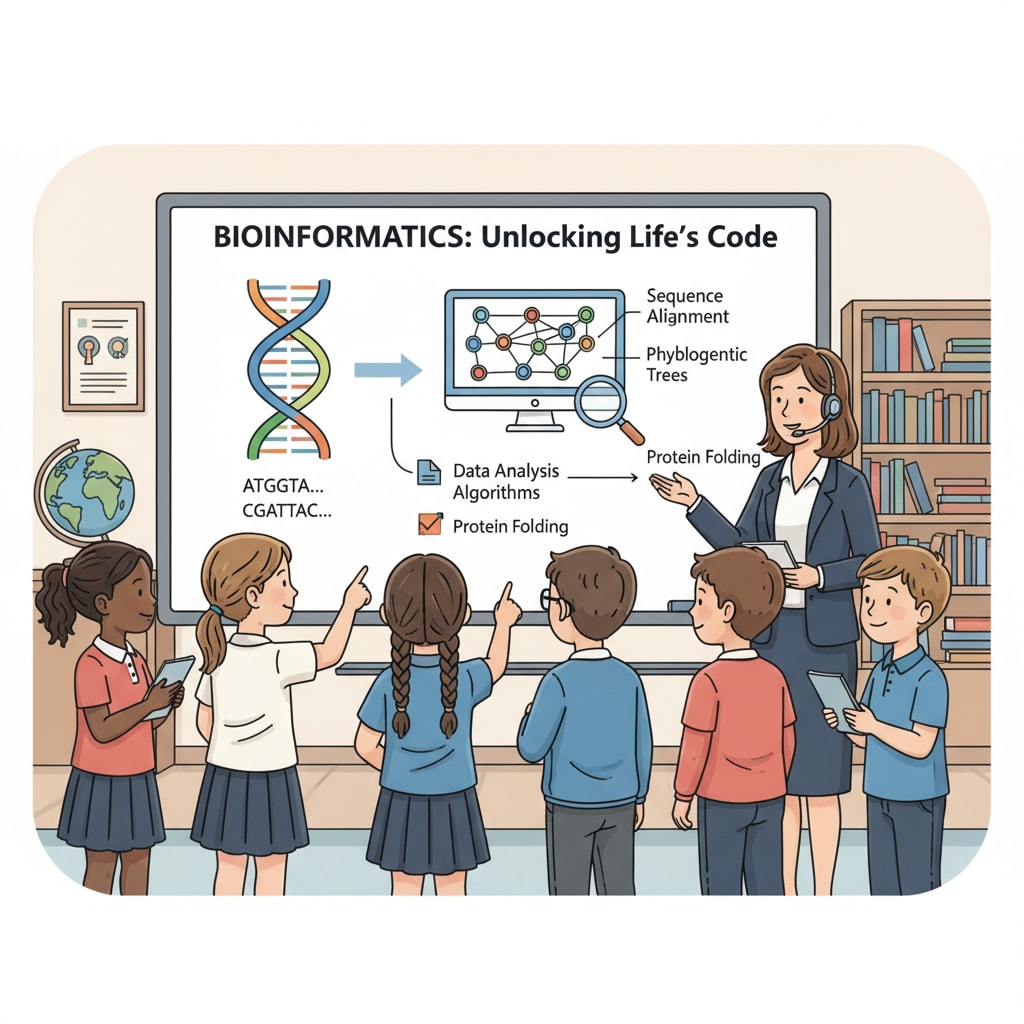Bioinformatics, academic difficulties, and scholarships are three intertwined aspects that significantly impact students’ educational and career trajectories. As bioinformatics, an interdisciplinary field merging biology and informatics (the science of information), gains momentum, students at the K12 level are starting to show interest. However, they often encounter academic roadblocks on this path.

The Academic Challenges in Bioinformatics for K12 Students
For K12 students, delving into bioinformatics is no easy feat. The field requires a solid foundation in both science and programming. In science, concepts like genetics and molecular biology can be complex. For example, understanding how DNA sequences encode proteins is a fundamental yet intricate concept. In addition, programming skills are essential. Learning languages such as Python, which is widely used in bioinformatics for data analysis, can be daunting for young students. As a result, many struggle to keep up with the curriculum.

Addressing Academic Difficulties
To overcome these academic difficulties, schools can play a crucial role. Incorporating hands-on activities can make learning more engaging. For instance, schools can organize laboratory sessions where students can analyze real biological samples using basic bioinformatics tools. Moreover, providing mentorship programs can be beneficial. Pairing students with experienced bioinformaticians can give them insights into the practical aspects of the field. This way, students can better understand how to apply theoretical knowledge.
Another approach is to integrate bioinformatics into the existing STEM curriculum in a more seamless manner. By doing so, students can build on their prior knowledge and gradually develop the necessary skills. This will not only reduce the perceived difficulty but also enhance their overall understanding of the subject.
The Role of Scholarships
Scholarships serve as a significant motivator for students interested in bioinformatics. They can alleviate the financial burden associated with further education in this field. Many organizations offer scholarships specifically for students pursuing bioinformatics. These funds can be used to cover tuition fees, purchase study materials, or even participate in research projects. As a result, students from diverse economic backgrounds can have equal opportunities to pursue their dreams in bioinformatics. Bioinformatics on Wikipedia provides more information on the field’s scope, which can be useful for students exploring scholarship opportunities.
Readability guidance: We’ve used short paragraphs and lists to summarize key points. Each H2 has relevant details presented in a clear way. The passive语态 has been kept to a minimum, and transition words have been added throughout the text to enhance flow.


